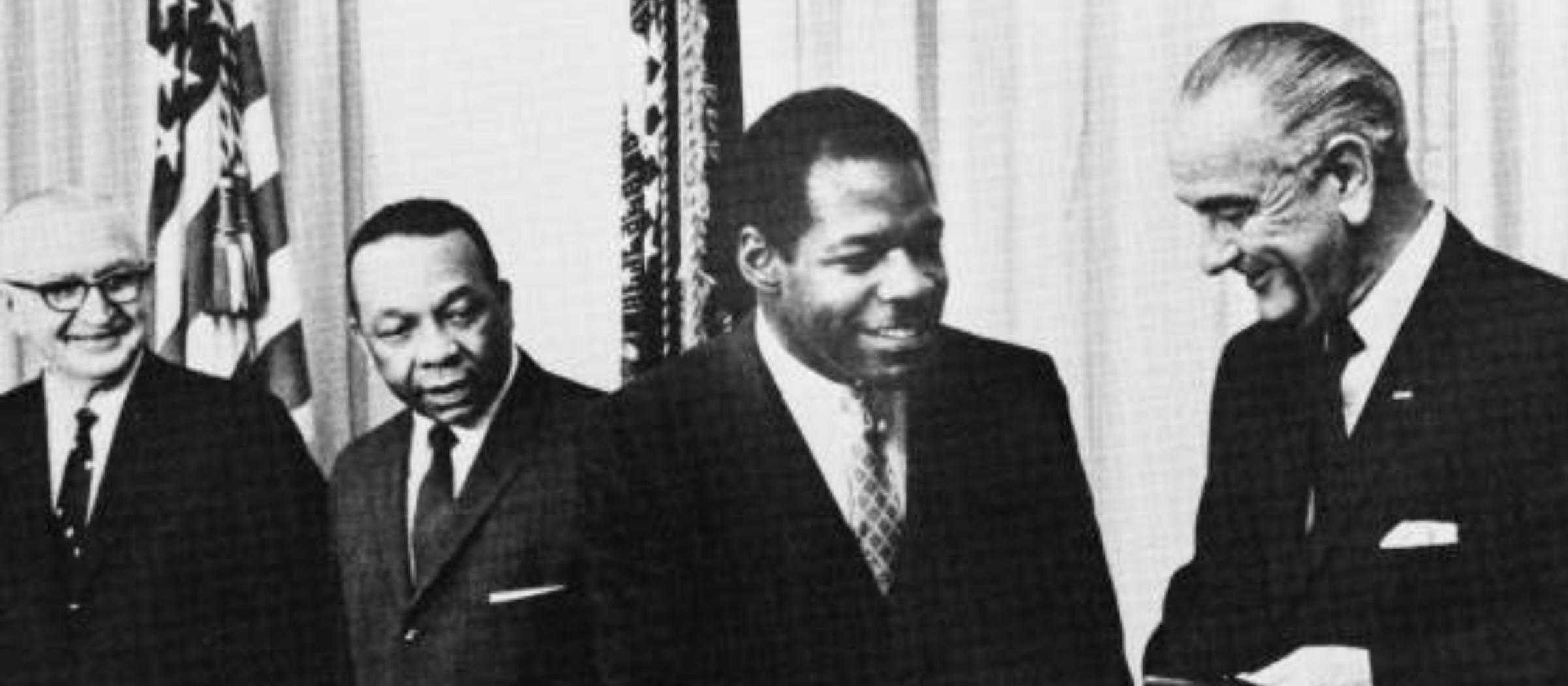
Remembering Cleveland L. Dennard – a guiding force in consolidating schools to create UDC
Remembering Cleveland L. Dennard – a guiding force in consolidating schools to create UDC

As students gather or rush to class across the quadrangle of the Van Ness Campus, signage reminds them of the significance of honoring Cleveland L. Dennard, a highly intelligent visionary who was recruited by President Lyndon B. Johnson’s administration to be the first president of the Washington Technical Institute. Dennard also worked with President Jimmy Carter and DC leaders to guide the merger of three schools to form the University of the District of Columbia.
In 1977, UDC was formed by a consolidation of Washington Technical Institute, Federal City College and DC Teachers College. In 1982, UDC named its quadrangle the Cleveland Dennard Plaza after a man who fought tirelessly to establish a comprehensive university in the District. He was also instrumental in securing the University’s current location, despite opposition.
Dennard was the first president of Washington Technical Institute (WTI), the District’s first public technical institute of higher learning. Under his leadership, WTI enabled thousands of local students to improve their lives economically.
A former deputy manpower commissioner of New York City and principal of vocational and adult schools in Atlanta, Dennard opened Washington Technical Institute in temporary quarters at Van Ness Street and Connecticut Avenue NW in 1968. The institute primarily trained technicians and mid-level professionals.
Dennard guided the institution for the next nine years, modeling its programs in aerospace, business, engineering, environmental science, public administration and health science. He also oversaw the construction of a new Van Ness campus. Its student body grew from about 500 to 4,900 students during Dennard’s tenure.
He resigned in 1977 after he was passed over for the presidency of UDC. He moved on to serve as president of Atlanta University from 1977 to 1983 and later as a management officer and chief operating officer at the Martin Luther King Jr. Center for Nonviolent Social Change from 1983 to 1992. He was a close and longtime friend of both the Rev. Martin Luther King Jr. and his wife Coretta Scott King.
Dennard was extraordinarily intelligent and entered Florida A&M University at the age of 16, earning his bachelor’s degree at age 19 and laying the foundation for simultaneously teaching physics, coaching football and managing a food cooperative.
He was a native of Sebring, Fla., and a graduate of Florida A&M. He received a master’s trade and industrial education from Colorado State University and a doctorate in educational administration from the University of Tennessee.
Dennard began his career in 1948 as a physics teacher and football coach in Montgomery, Ala., where he was also the manager of a cooperative food market. In 1949, he was named coordinator of vocational and adult education for the city-county school system in Montgomery.
In 1955, Dennard became associate professor at Alabama A&M College, and until 1961 he was also assistant supervisor for trade and industrial education in the Alabama State Department of Education. He moved from the state post in 1961 to be principal of the Carver Vocational and Adult Schools in Atlanta. Later, while deputy manpower commissioner for New York City, he was appointed by President Johnson to head Washington Technical Institute in DC.
Dennard was a member of the Joint Commission on Correctional Manpower and Training and presidential advisory committees on adult basic education and science and technology. He was also chairman of the Washington Center for Metropolitan Studies and a member of the panel that helped plan the Fort Lincoln community in Northeast Washington.
He served as a trustee of Spelman, Morehouse and Knoxville Colleges and the Robert F. Kennedy Memorial Foundation. He was also a director of the Southern Leadership Foundation, Washington Metropolitan Board of Trade and the Chesapeake and Potomac Telephone Co. He was a member of the U.S. commissions on research and training and eligibility and accreditation, the U.S. Institute for Housing Management, the U.S. Council on Foreign Relations and the Institute of International Education.
Dennard’s impact continues for generations and is memorialized by sculptor Allen Uzikee Nelson at 16th Street and Arkansas Avenue NW in a public art installation. Nelson is an engineer who taught at Washington Technical Institute and UDC.
The fruit of Dennard’s labor continues with notable WTI alumni such as Michael Marshall who was the lead architect on UDC’s state-of-the-art Student Center.
Dennard died at the age of 63 in Atlanta in 1992. He was married to Belle Brooks Dennard of Atlanta and has four daughters and two grandchildren.